
Now available
Gagosian Quarterly Fall 2024
The Fall 2024 issue of Gagosian Quarterly is now available, featuring Andy Warhol’s Mao (1972) on the cover.
I am fascinated by tools and technology in general. . . . I believe in the idea of an extended body. We know so little, we feel so much.
—Davide Balula
Gagosian is pleased to present Iron Levels, new works by Davide Balula. This is his first exhibition in Rome.
At once surreal, comical, and critically engaged, Balula’s works examine the intersection of philosophy, phenomenology, and physics. For the Rome gallery, he has created an experiential trajectory that responds directly and specifically to the architecture. On entering the exhibition, visitors pass through a sculptural metal detector. A ubiquitous instrument of search and verification, the metal detector makes private belongings into objects of suspicion or potential threat. Its purpose is to reveal the metal, non-bodily material we carry with us each day—keys, coins, cell phone—that which we habitually treat as extensions of the self. The metal detector functions as a portal, further separating the idealized space of the gallery from the world outside.
In the first room, the visitor is invited to pick up and handle a stainless-steel ball, which sits in a ball-holder sculpted from local limestone. The carved holder evokes the organic softness and curves of skin, and the rendition of flesh and muscle as expressed by Italian master sculptors. The ball and holder explore the gravitational balance between body and earth, in an invitation to consider one’s weight, mass, and density. In Air Between Fingers (2014), a short video shot on an iPhone, Balula’s thumb and middle finger hover with a millimeter of space between each fingertip, occasionally touching as his control over the minute space slips, in a mesmerizing display of the forces of gravity, friction, and magnetism that act upon and within the body.
The second, oval-shaped room of the exhibition contains a new series of Balula’s Burnt Paintings, made for the sweeping curve of the room’s wall. The works in this series consist of two binary elements—one frame holding the charred charcoal residue of burnt wood, and a second frame holding a canvas imprinted with the charcoal of the burnt wood. In groups of two, three, or four frames to a work, these “paintings” sit together in positive and negative relationship, much like that of photography or printmaking. The process of making charcoal is slow and steady, requiring a gradual increase and decrease of heat so that the wood is not turned into ash, but retains the potential to burn again; the Burnt Paintings thus consider the cyclical, almost alchemical, transfer of energy in nature, a phenomenon fundamental to Balula’s work.

The Fall 2024 issue of Gagosian Quarterly is now available, featuring Andy Warhol’s Mao (1972) on the cover.
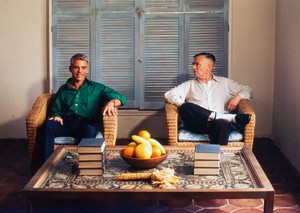
Katherine Bucknell, previously the editor of a four-volume edition of Christopher Isherwood’s diaries, has now published Christopher Isherwood Inside Out, an intimate and rigorous biography of the celebrated writer and gay cultural icon. Here she meets with Josh Zajdman to discuss the challenges and revelations of the book.

Grace Coddington, fashion editor and former creative-director-at-large for American Vogue, meets with the Quarterly’s Derek C. Blasberg to reminisce on some of her most iconic collaborations with photographers and artists.
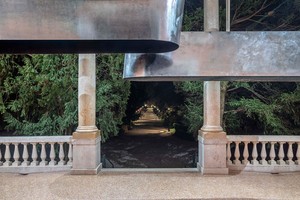
Architect and designer Jayden Ali joins Gagosian associate director Péjú Oshin for a conversation about false notions of failure, four-day workweeks, and the connective power of building together.
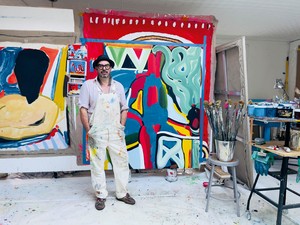
Old friends chat about their love of music, nightclub paintings, life lessons from aikido, and Spencer Sweeney’s upcoming exhibition The Painted Bride, at Gagosian, New York.
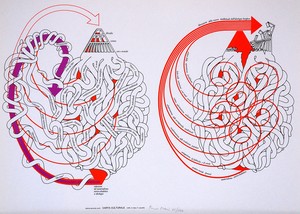
The exhibition Enzo Mari, curated by Hans Ulrich Obrist with Francesca Giacomelli at the Design Museum, London, runs through September 8. Taking a cue from this major retrospective, Bartolomeo Sala delves into Mari’s practice and convictions.

The Warp of Time celebrates a hundred years of shared history between the Old Carpet Factory, a historical mansion located on the Greek island of Hydra, and Soutzoglou Carpets. Here, Salomé Gómez-Upegui interviews curator Ekaterina Juskowski about Helen Marden’s woven works within the context of the exhibition, touching upon themes of history, memory, and creative expression.
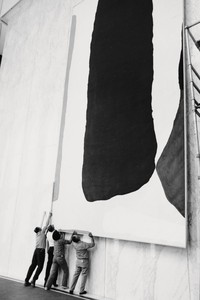
John Elderfield and Lauren Mahony of Gagosian speak with the National Gallery of Art’s Harry Cooper about the new and expanded version of Elderfield’s 1989 monograph on Helen Frankenthaler that Gagosian, in collaboration with the Helen Frankenthaler Foundation, will publish this summer. The conversation traces Elderfield’s long interest in Frankenthaler’s work—from his time as a young curator at the Museum of Modern Art, New York, to the present—and reveals some of the new perspectives and discoveries awaiting readers.
In conjunction with the memorial service for Brice Marden held at the Museum of Modern Art, New York, Mirabelle and Melia Marden produced a short film directed by Chiara Clemente to honor the late artist. Featuring interviews, archival photographs, and family videos, this film captures Marden’s vibrant life and enduring cultural impact.

Sydney Stutterheim has published Artist, Audience, Accomplice: Ethics and Authorship in Art of the 1970s and 1980s (Duke University Press, 2024), a survey of performance art and related practices that involve, in various manners, the figure of the accomplice. To celebrate the publication, the Quarterly is publishing an excerpt that examines Chris Burden’s Deadman (1972).
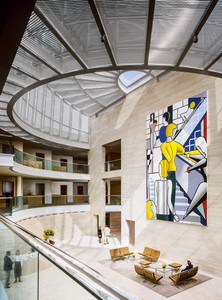
Michael Ovitz, cofounder of Creative Artists Agency (CAA), looks back to 1989, the year he and the architect I. M. Pei commissioned Roy Lichtenstein to create the Bauhaus Stairway Mural for the then new CAA Building in Los Angeles. Through the experience of working with Lichtenstein, Ovitz formed a meaningful friendship with the artist.
Join Gagosian for a conversation between director, producer, and writer Sophia Heriveaux and actor, director, and writer Roger Guenveur Smith inside the exhibition Jean-Michel Basquiat: Made on Market Street, at Gagosian, Beverly Hills. Heriveaux and Guenveur Smith both share a personal connection to Basquiat: Heriveaux is the artist’s niece and Guenveur Smith was one of his friends and collaborators. The pair discuss Basquiat’s work and legacy, as well as his lasting impact on contemporary art and culture.